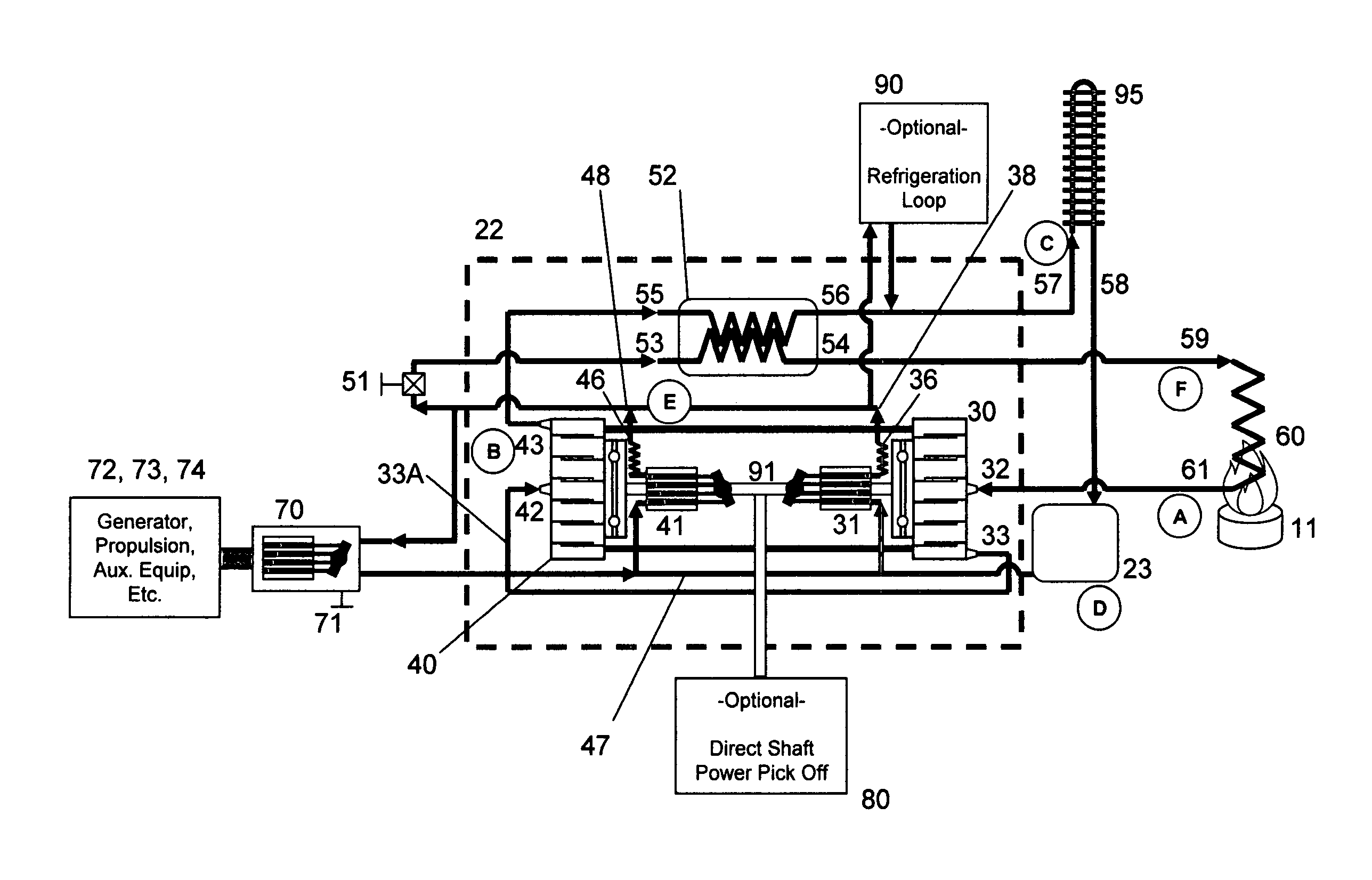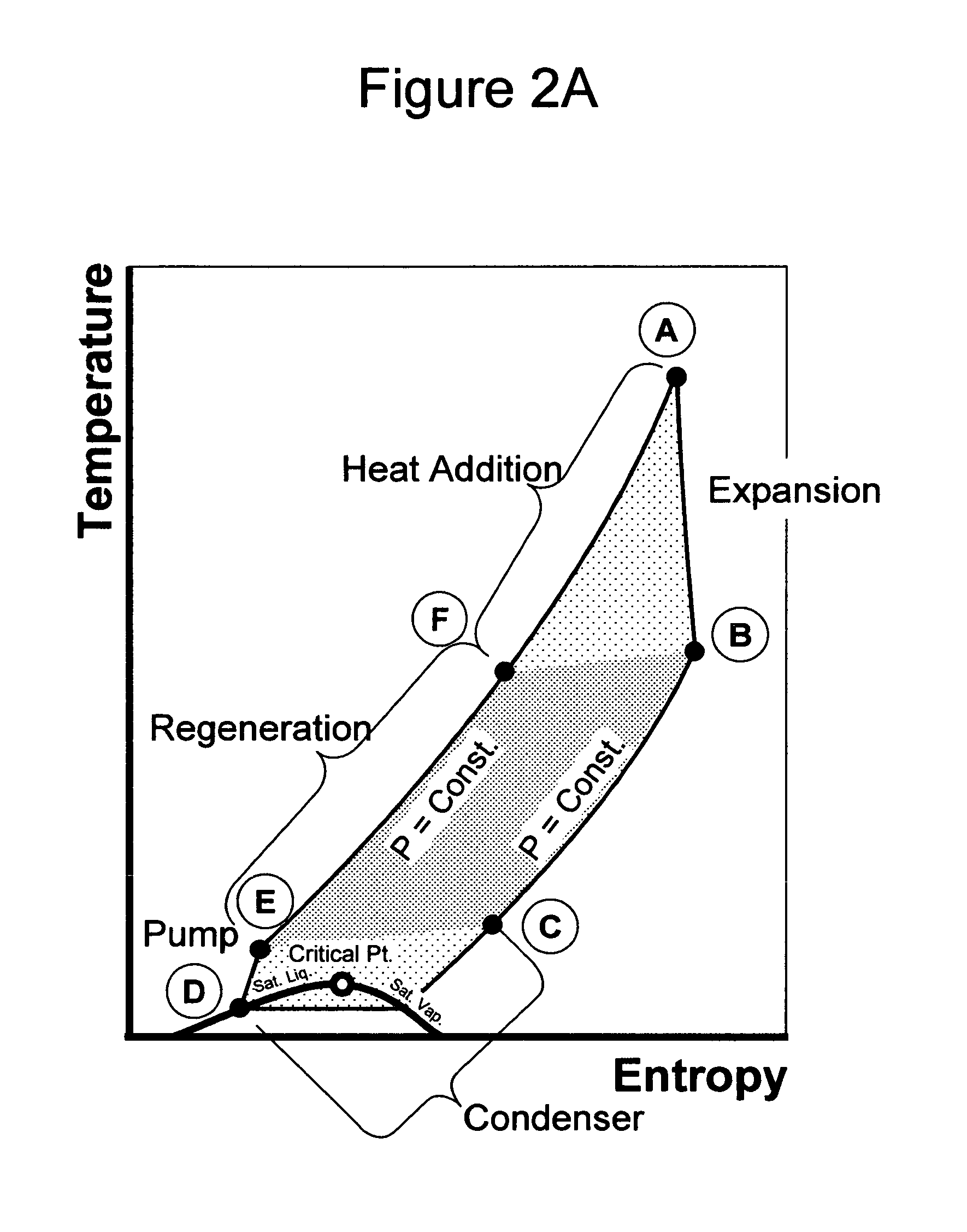Closed loop scroll expander engine
a scroll expander and expander technology, applied in combination engines, machines/engines, mechanical equipment, etc., can solve the problems of significant green house and carbon fuel emission, limited power density, and serious vibration and noise, and achieves a wide range of energy outputs, easy maintenance, and low weight
- Summary
- Abstract
- Description
- Claims
- Application Information
AI Technical Summary
Benefits of technology
Problems solved by technology
Method used
Image
Examples
Embodiment Construction
[0040]Various embodiments of the invention will now be described. The following descriptions provide specific details for a thorough understanding and enabling description of these embodiments. It should be noted, however, that the above “Background” describes technologies that may enable aspects and embodiments of the invention. One skilled in the relevant arts will understand, however, that the invention may be practiced without many of these details. Additionally, some well-known structures or functions may not be shown or described in detail, so as to avoid unnecessarily obscuring the relevant description of the various aspects and embodiments of the invention.
[0041]The terminology used in the description presented below is intended to be interpreted in its broadest reasonable manner, even though it is being used in conjunction with a detailed description of certain specific embodiments of the invention. Certain terms may even be emphasized herein; however, any terminology inten...
PUM
 Login to View More
Login to View More Abstract
Description
Claims
Application Information
 Login to View More
Login to View More - R&D
- Intellectual Property
- Life Sciences
- Materials
- Tech Scout
- Unparalleled Data Quality
- Higher Quality Content
- 60% Fewer Hallucinations
Browse by: Latest US Patents, China's latest patents, Technical Efficacy Thesaurus, Application Domain, Technology Topic, Popular Technical Reports.
© 2025 PatSnap. All rights reserved.Legal|Privacy policy|Modern Slavery Act Transparency Statement|Sitemap|About US| Contact US: help@patsnap.com



